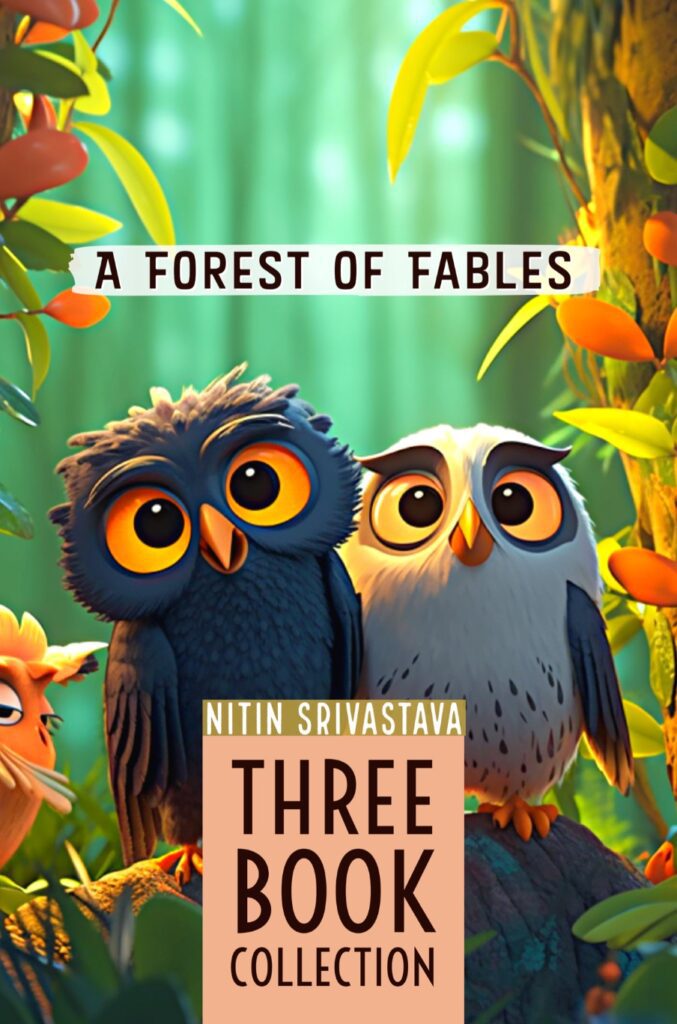Peering in, they saw a man frantically searching through crates and boxes. “Oh no, oh no,” he was saying. “Where did I put those stamps? The post office will be so angry!”
Aarav and Roshni looked at each other, realising they had found their missing driver. They approached him gently.
“Excuse me, sir,” Aarav said. “Are you looking for the new Scinde Dawk stamps?”
The man jumped in surprise. “Y-yes,” he stammered. “Who are you? How did you know?”
Roshni stepped forward. “We’re here to help. Can you tell us exactly what happened?”
The driver, whose name was Khan, explained that after getting his wheel fixed, he had rushed to deliver the stamps before the warehouse closed. In haste, he had misplaced the crate of stamps among the many other deliveries.
Together, Aarav, Roshni, and Mr Khan searched the warehouse. Finally, Roshni spotted a small crate wedged behind some larger boxes. “Could this be it?” she called out.
Khan hurried over and opened the crate. Inside were sheets of the new Scinde Dawk stamps, their red surface gleaming in the dim light of the warehouse.
“You’ve found them!” Khan exclaimed joyfully. “Oh, thank you, children! You’ve saved the launch of our new postal system!”
Aarav picked up one of the stamps carefully, examining it closely. The stamp was a small, circular piece in a striking vermilion colour. In the centre was the emblem of the British East India Company – a heart-shaped design with the initials “EIC” embossed on it.
“These are remarkable,” Aarav said, his voice filled with awe. “What makes them so special, Khan uncle?”
Khan’s eyes lit up with pride. “These, my young friends, are the very first adhesive postage stamps in all of Asia! They’re called ‘Scinde Dawk’ because ‘Scinde’ is the old spelling of Sindh, our region, and ‘Dawk’ means post or mail in our local language.”
Roshni leaned in for a closer look. “But why are they so important?”
“You see,” Khan explained, “before these stamps, sending letters was complicated and expensive. The recipient had to pay for the letter; the cost depended on how far it had travelled. But with these stamps, the sender can pay a fixed price in advance, no matter where the letter goes in Sindh. It’s going to revolutionise how we communicate!”
Aarav nodded, understanding dawning on his face. “So, these stamps are making it easier and cheaper for people to send letters?”
“Exactly!” Mr. Khan beamed. “And not just letters. Important documents, business contracts, family news – all of it will travel faster and more efficiently now. These little stamps are going to bring people closer together across great distances.”
As they carefully packed the stamps to take back to the post office, Aarav couldn’t help but feel the weight of history in his hands. These small, red circles weren’t just pieces of paper – they were the beginning of a new era of communication in India.
As they rushed back to the post office with the recovered stamps, Aarav felt a familiar tingling sensation. The Scinde Dawk stamp in his pocket began to glow once more.
“Roshni, I think we’re about to travel again,” he said urgently. “Are you ready?”
Roshni grabbed his hand, her eyes sparkling with excitement. “Let’s go!” she exclaimed. The world around them began to spin, colours blending into a whirlwind of light and shadow.
When the dizziness subsided, Aarav and Roshni found themselves in a completely different setting. The air was crisp, and the streets were bustling with a mix of old and new – horse-drawn carriages sharing the road with automobiles and grand buildings under construction.





